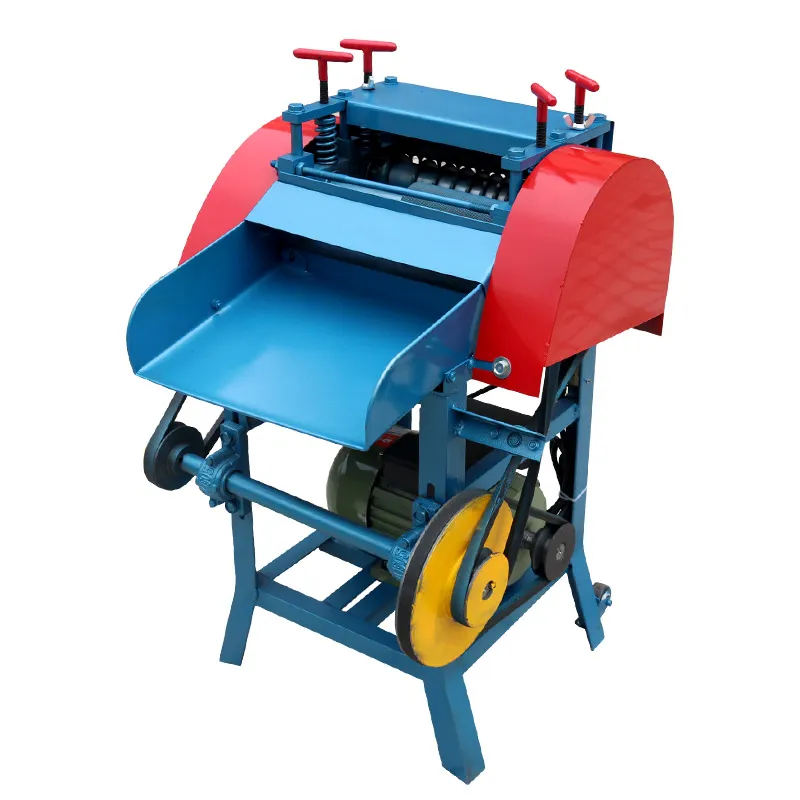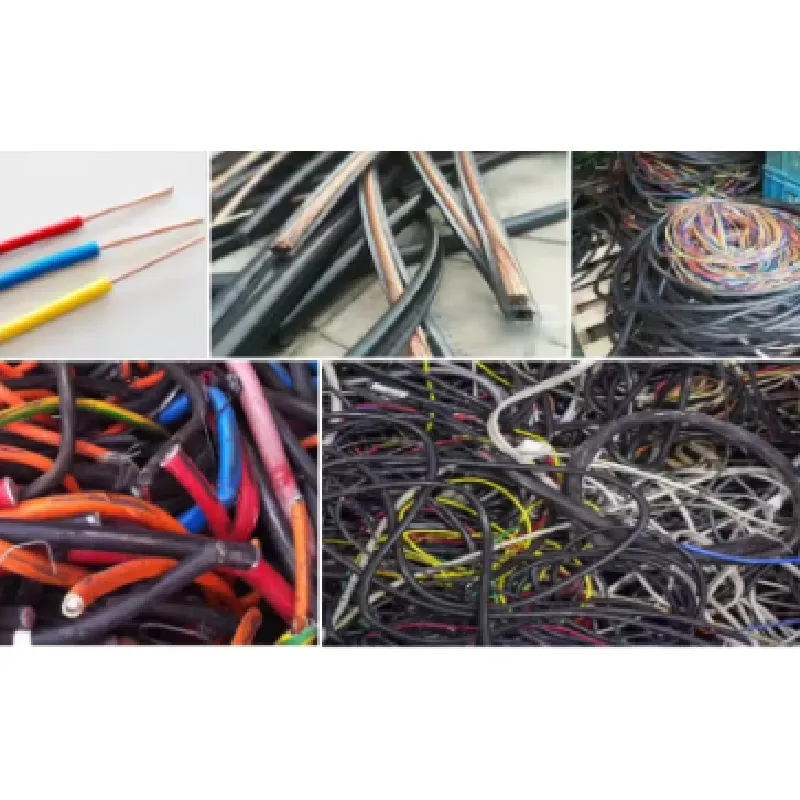
Sep . 19, 2025 10:30 Back to list
In industrial operations, the precision and efficiency of cable processing are paramount for maximizing productivity and ensuring material recovery. The Wire Stripper Machine stands as a cornerstone technology in this domain, engineered to meticulously remove insulation from various types of electrical wires and cables. This equipment is critical across numerous sectors for material reclamation, particularly for copper and aluminum, thereby supporting sustainable practices and economic viability. This article delves into the technical intricacies, application versatility, and strategic advantages of modern wire stripping solutions, tailored for B2B decision-makers and technical professionals seeking optimal performance and return on investment.
The production of a high-performance Wire Stripper Machine involves a meticulously controlled multi-stage manufacturing process, ensuring robust construction, precision operation, and extended service life. Adherence to stringent quality standards at each phase is crucial for delivering equipment that meets demanding industrial requirements.
Our manufacturing processes adhere strictly to international standards such as ISO 9001 for quality management systems and CE marking for European market compliance. Electrical components meet IEC 60204-1 safety standards. Through robust engineering and material selection, a typical industrial Wire Stripper Machine has a projected service life of 10-15 years with proper maintenance, significantly longer for core mechanical components.
These machines are indispensable in industries such as:
In these scenarios, the key advantages include enhanced material purity (often exceeding 99% copper purity), significant reduction in manual labor costs, improved operational safety, and a substantial increase in processing speed compared to traditional methods.
The wire processing industry is currently experiencing several transformative trends, primarily driven by the demand for higher efficiency, increased material recovery rates, and enhanced sustainability. Automation and smart factory integration are at the forefront, with advanced Wire Stripper Machine designs incorporating IoT capabilities for predictive maintenance and remote monitoring. There's a growing emphasis on processing diverse cable types, including armored cables, shielded cables, and high-voltage power lines, requiring more versatile and robust machinery. Furthermore, regulatory pressures for environmental protection are accelerating the adoption of dry stripping technologies over chemical methods, reducing hazardous waste. The integration of artificial intelligence for wire identification and sorting is also an emerging trend, promising even greater operational autonomy.
Understanding the technical specifications of a Wire Stripper Machine is crucial for selecting the right equipment for specific operational requirements. Key parameters influence performance, throughput, and operational efficiency.
| Parameter | Range / Value |
|---|---|
| Stripping Range (Cable Diameter) | 1 mm - 150 mm (0.04" - 6") |
| Processing Capacity | Up to 2000 kg/hour (dependent on wire type) |
| Motor Power | 2.2 kW - 37 kW (3 HP - 50 HP) |
| Voltage Compatibility | 220V/380V/440V, 3-phase, 50/60 Hz |
| Stripping Speed | Up to 60 meters/minute |
| Number of Blades/Rollers | 1-4 sets of cutting blades, multiple feed rollers |
| Blade Material | D2 Tool Steel or Carbide Alloy |
| Overall Dimensions (L x W x H) | Variable, e.g., 800x600x1200 mm to 2500x1500x1800 mm |
| Weight | 150 kg - 3500 kg |
| Control System | Manual, Semi-Automatic, or PLC-based Automatic |
| Safety Features | Emergency Stop, Blade Guards, Overload Protection |

The versatility of the Wire Stripper Machine extends across a myriad of industrial applications, delivering substantial economic and operational benefits.
"Our investment in an automated Wire Stripper Machine drastically cut our labor hours for cable processing by 70% and boosted our copper recovery purity from 95% to 99.5%. The robust construction and minimal maintenance requirements have truly made it a cornerstone of our recycling operations." – Operations Manager, Major Scrap Metal Recycler.
Another client in the automotive sector reported, "Integrating this stripping technology into our production line for processing waste harnesses has not only yielded significant material cost savings but also contributed positively to our corporate sustainability goals by closing the loop on valuable resources."

When investing in a Wire Stripper Machine, a thorough vendor comparison is essential. Different manufacturers offer varying levels of technology, support, and customization. This table provides a generalized comparison of common vendor profiles:
| Feature/Service | Entry-Level / General Purpose Vendors | Specialized / High-Performance Vendors |
|---|---|---|
| Stripping Range | Limited to common residential/commercial cables (e.g., 1-50 mm) | Extensive, including armored, high-voltage, and very thick cables (e.g., 1-150 mm+) |
| Automation Level | Manual or semi-automatic feed, basic controls | Fully automatic, PLC-controlled, integrated with feeders/conveyors, remote monitoring (Industry 4.0 ready) |
| Blade Durability & Material | Standard tool steel, moderate lifespan, frequent sharpening/replacement | High-grade D2 steel, carbide alloys, optimized heat treatment, extended lifespan |
| Build Quality & Construction | Light to medium-duty, suitable for intermittent use or lower volumes | Heavy-duty, robust industrial design for continuous operation, minimal vibration |
| Customization Options | Limited to no customization, standard models only | Extensive customization for specific cable types, integration needs, and production volumes |
| After-Sales Support | Basic warranty, limited spare parts availability, basic technical support | Comprehensive warranty, readily available spare parts, expert technical support, on-site service, training |
Recognizing that no two industrial operations are identical, leading manufacturers of Wire Stripper Machines offer bespoke customization options. These tailored solutions ensure that the equipment perfectly integrates with existing production lines, handles unique cable specifications, or meets specific throughput targets. Customization can involve:
These customized solutions are developed through close collaboration with clients, involving detailed engineering consultations, CAD modeling, and rigorous testing to guarantee optimal performance and seamless integration.
Client: EcoRecycle Solutions, a leading municipal waste processing facility in North America.
Challenge: Manual processing of over 50 tons of mixed scrap cables weekly, leading to low metal recovery rates (average 90% purity), high labor costs, and significant operational bottlenecks. The cable types ranged from small domestic wiring to thick industrial power cables up to 70 mm in diameter.
Solution: Implemented a high-capacity, heavy-duty Wire Stripper Machine (Model WS-3000) with a specialized multi-blade system and an automated feeding conveyor. The machine was capable of processing cables from 1 mm to 100 mm without manual adjustment of feed points for different sizes.
Results: Within six months of installation, EcoRecycle Solutions achieved a 98.5% copper purity, increasing the market value of their recovered material by 8%. Labor costs associated with cable stripping were reduced by 65%, reallocating personnel to other critical areas. Overall processing throughput increased by 150%, significantly impacting their profitability and sustainability metrics. The robust design and advanced safety features also led to a measurable reduction in workplace incidents.
Client: InnovateTech Inc., a high-volume manufacturer of consumer electronics, facing challenges with small-diameter wire waste from their assembly lines.
Challenge: InnovateTech generated consistent streams of fine-gauge insulated wires (0.5 mm - 5 mm) as production waste. Manual stripping was infeasible due to volume and the delicate nature of the wires. Outsourcing was costly and led to delays in material recovery.
Solution: Installed a compact, precision-focused Wire Stripper Machine (Model WS-50P) designed for delicate wires. This model featured micro-adjustment capabilities for blade depth and speed, preventing conductor damage. It was integrated with a small conveyor system for continuous feeding of pre-cut wire segments.
Results: InnovateTech successfully implemented in-house stripping, reducing their waste disposal costs by 40% and generating a new revenue stream from recovered copper. The precision of the machine resulted in near-perfect copper recovery (99.8% purity), validating the investment. The quick ROI was attributed to reduced outsourcing fees and the increased value of processed scrap. This initiative also bolstered their "green manufacturing" credentials.
A: Modern industrial wire strippers are highly versatile, capable of processing a wide range of insulated cables, including single-core, multi-core, armored, shielded, rubber-insulated, PVC-coated, and even lead-sheathed cables. The key is selecting a machine with an appropriate stripping range and blade configuration for your specific material stream.
A: By efficiently separating valuable metals (copper, aluminum) from insulation, these machines facilitate high-purity material recovery. This reduces the need for virgin material extraction, conserves natural resources, minimizes landfill waste, and lowers the energy consumption associated with primary metal production. It promotes a circular economy by turning waste into valuable secondary raw materials.
A: Lead times can vary depending on the machine's complexity, customization requirements, and current production schedule. For standard models, lead times typically range from 4-8 weeks. Heavily customized or large-scale integrated systems may require 10-16 weeks or more. We recommend consulting directly with our sales team for precise lead time estimates based on your specific order.
A: We typically offer a comprehensive 12-24 month warranty on all major components of our Wire Stripper Machines, covering manufacturing defects. Our after-sales support includes access to a dedicated technical support team, remote diagnostics, readily available spare parts, and optional on-site maintenance and operator training services to ensure continuous operational efficiency.
Latest news
Double Shaft Shredder Price Explained: Global Trends, Benefits & Vendor Comparisons
NewsNov.24,2025
Expert Insights into Double Shaft Shredder Factory: Boosting Global Recycling Efficiency
NewsNov.23,2025
Leading Double Shaft Shredder Suppliers for Industrial Recycling and Waste Management
NewsNov.23,2025
Leading Double Shaft Shredder Manufacturers | Durable & Sustainable Industrial Shredders
NewsNov.23,2025
Understanding Double Shaft Shredder Machine Price: Buyers’ Guide & Global Insights
NewsNov.22,2025
The Essential Guide to Double Shaft Shredders: Benefits, Applications & Trends
NewsNov.22,2025